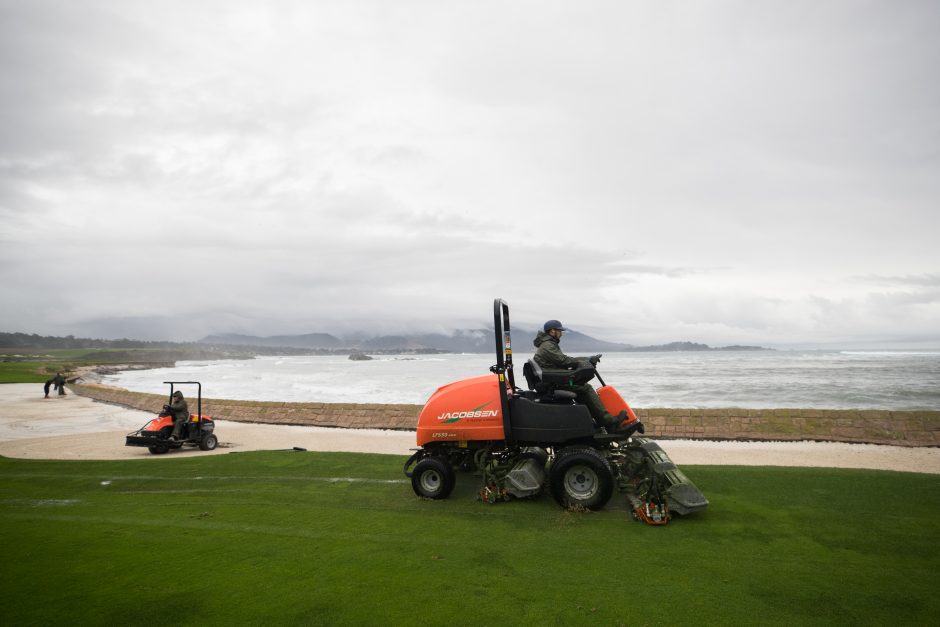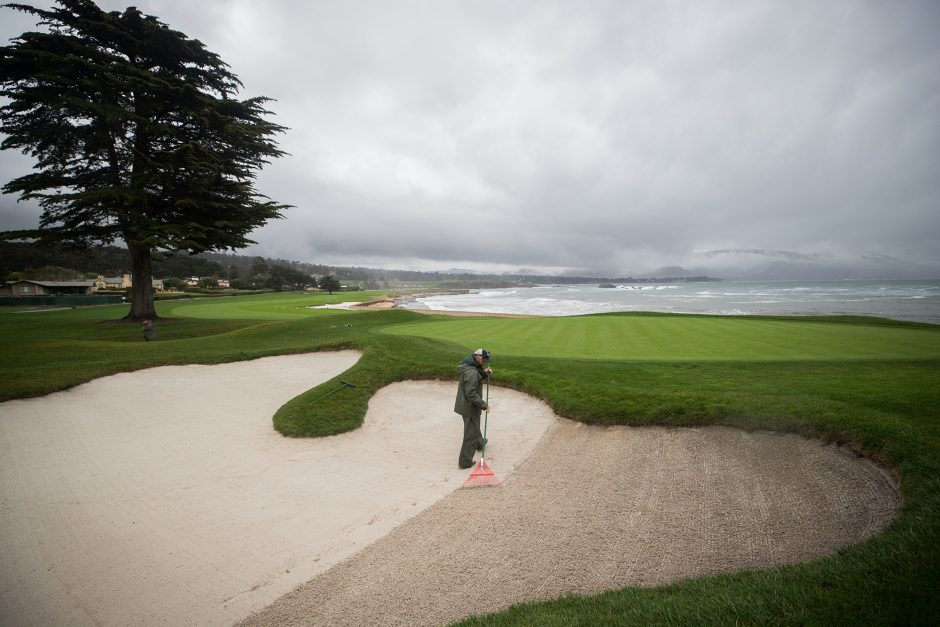A Labor of Love: What it Takes to Create U.S. Open Conditions at Pebble Beach
How do you get Pebble Beach Golf Links ready for the U.S. Open?
“We don’t just flip the switch on Monday of championship week,” says Chris Dalhamer, the Director of Golf Course Maintenance at Pebble Beach Resorts.
Course setup dry-runs start two years out, fairways shrink a full seven months before the championship and mowers let the rough go with six weeks to go. Public play is limited beginning May 6, and by the end of the month, play on the golf course is reduced by 70%.

We don’t just flip the switch on Monday of championship week.
The USGA arrives permanently the week before the championship, inspecting pin placements, mowing heights, moisture levels and the firmness of the course. The USGA also studies the course with its top agronomists and rules officials.
Tournament week is a bit of a rude awakening. Dalhamer’s day starts at 4 a.m., with the rest of his staff – which quadruples in size for the championship – showing up by 4:30 a.m. Nearly 100 superintendents, assistant superintendents and aspiring superintendents from across the globe join Dalhamer’s staff of 35. Dalhamer tries to call it a day by 10 p.m., after the equipment has been staged for the next morning.
Beginning Monday, Dalhamer splits the grounds crew in half, sending 60 members out on both the front and back nines. Contrast that with typical resort play, where a staff of 28 steadily moves through the course, starting on the first tee. At the U.S. Open, both nines of the course need to be ready for play that begin as early as 6:45 a.m.
Dalhamer’s U.S. Open team mows tees, fairways, and collars for approach shots. On the greens, they mow, set the cups and roll the putting surface (a process that makes greens smoother and faster). Detail work includes raking every bunker (the USGA prefers them to be “fluffed” to create a variety of lies), plus mowing the walkways and the intermediate cut of rough.

We treat Monday the same as Sunday as far as course preparations.
The maintenance crew enters the eye of the hurricane once play begins. They rest, BBQ and watch play. As play winds down, they can begin the second half of their shift. The fairways and tees are mowed for a second time. The greens are usually rolled a second time, and could potentially be cut again.
“We’ll do very similar practices that we do in the morning,” Dalhamer says. “That’s dictated by – are the greens too fast? Then we don’t need to mow them again. Are they too slow? Then we need to mow them.”
Saturday night is the final double-shift of the week. Then Dalhamer sets one more way-too-early alarm before setting up the course that will decide the next U.S. Open champion.
“We take a little breath on Sunday when the last putt drops,” says Dalhamer, who has served as Pebble Beach’s Superintendent since 2005. “But we treat Monday the same as Sunday as far as course preparations.”
Photography by Sherman Chu